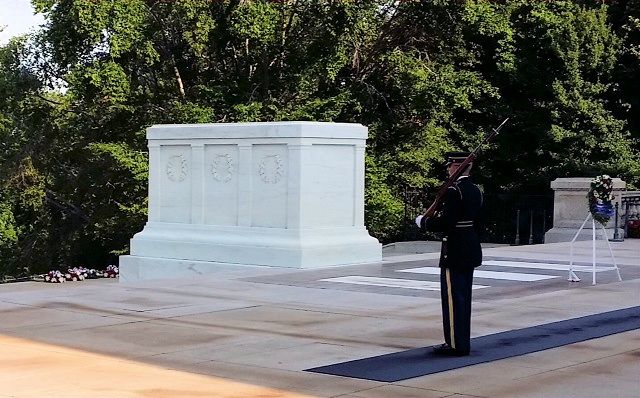
Not everyone made it back home to raise families though. JR's brother took this shot recently at Arlington. My uncle Grady Springfield was one of those who didn't. He, too, was in the Meuse-Argonne offensive. Grady was killed in action on his birthday, Nov. 5th 1918, just six days before the end. The offensive was moving so fast that mass graves were dug and the dead buried oftentimes without identification. When the graves were exhumed a year or two later, it became even more difficult to identify them. So the family only received the "missing in action" telegram from the War Dept. It was not until 1923 that they received a letter from another soldier who was with Grady when he was killed that they knew for sure what had happened. The war graves unit buried many of the unidentified in the Meuse-Argonne battlefield cemetery in France. Fittingly enough, several of the bodies chosen for examination for the Tomb of the Unknown Soldier came from that cemetery. For all the family knows, Grady could be the one in that sacred tomb which represents all who were lost. For that reason, even if today's DNA analysis could prove it, we would not want to have it tested. It is what it is and shall stay that way forever. One day, I will visit France though, find that battlefield cemetery with his name on the tablet of the unknowns there at the chapel and try to honor his sacrifice by remembering a man who was long gone by the time I came along, but who was never far away in the memory of my mother. Today, July 3, would have been her 105th birthday. One of the things she most wanted was to know where her brother was. When I finally located the most probable place in France in 2000 she was so greatly relieved. How many others are going thru the same thing today. Remember the KIA's and MIA's and their families. Thank you! JR





